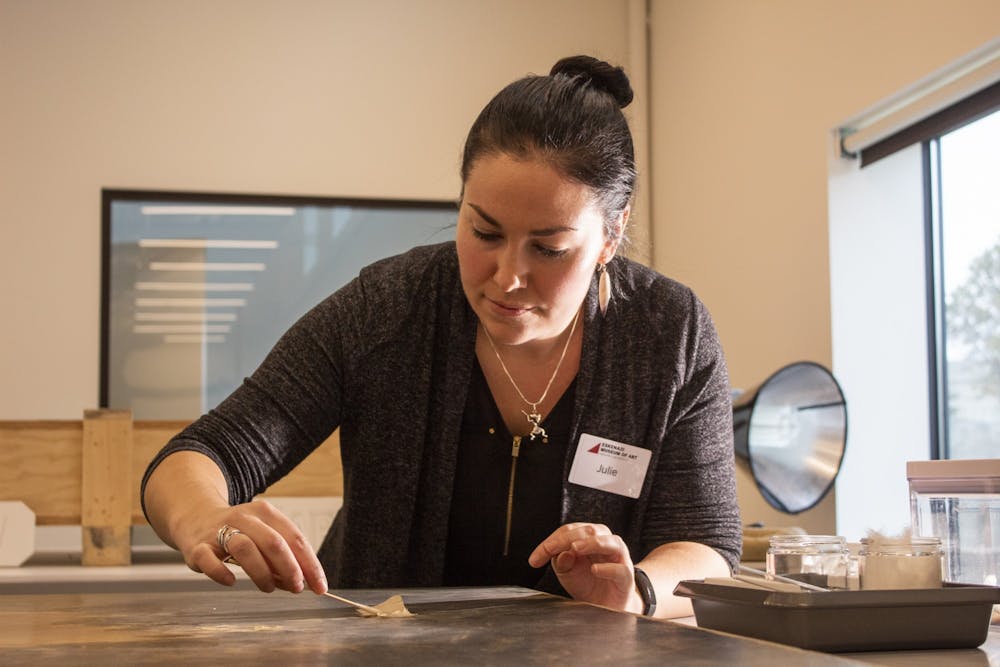Hundreds of years ago, an artist mixed together mineral pigments with oil and a drying additive to make a painting. Today, art conservators will examine that painting, now crusted with age, and then use chemical solvents, analytical tools and intense focus to execute an age-defying refurbishment.
The work of a painting conservator includes researching materials, repairing tears, restoring frames, toning discolored areas, cleaning and determining safety for travel on any given painting.
The paintings on display at the Eskenazi Museum of Art are, in some cases, around 500 years old. Without professional intervention, some would not exist today.
As part of its $30 million renovation, the museum opened its Center for Conservation, equipped with top-of-the-line analytical tools that will better allow in-house conservation specialists to preserve the original state of the piece.
“What we’re really hoping for is what’s best for the art, at the end of the day,” said Julie Ribits, the Beverly and Gayl W. Doster paintings conservator.
The new center has a conservation studio where Ribits and paintings conservation technician Ellen Lyon repair, refill and tone the pieces. It also has an analytical laboratory designed for scientific analysis of paintings, equipped with an infrared camera, microscopes and ultraviolet examination tools.
One of these pieces of analytical equipment is the X-ray fluorescence spectrometer. Ribits and Lyon use the tool to identify specific minerals used in oil paintings from the 17th century, like mercury in the color vermilion, to best match the color when they retouch the painting.
Another tool is the Hirox 3D Microscope, which produces a three-dimensional map of a painting’s surface. It allows conservators to examine older restorations, resulting in fewer invasive samples of the painting’s materials. She can also share photos with other professionals to help with research.
They also have a new vacuum hot table, fume hood and a separate high ventilation room that will protect conservators when they apply varnish, which has harmful fumes, to a painting. Moving carts ensure safe transportation around the center.
It can be meticulous work, but it is rewarding, said Lyon.
“It will never be as if it were just made, but if it weren’t for intervention by professionals, a lot of these works wouldn’t exist today,” Lyon said.
In the future, Ribits and Lyon hope to invite objects conservators, other professionals and students to collaborate on research and restoration.
Ribits also wants to examine the museum’s entire collection of around 1,200 paintings, including works on display and in storage. Ribits said because of the breadth of the collection, she doesn’t know many of the pieces' stories. She said she hopes that by examining all of them, which could take her five to ten years, she will uncover their individual histories.
“If we can learn more about why these objects and paintings were made, we can bring that context and that story to the museum for all of our visitors to really understand,” Ribits said. “We can get a better idea of the human condition of the time.”
It is the museum’s responsibility to thoroughly care for the paintings while in its possession, Lyon said. The conservator’s job is to extend its lifespan as ethically as possible.
“I am but a blip in the lifespan of these paintings and hopefully, all the work I do at IU will ensure that they stay for a very long time in very good care,” Ribits said.
CORRECTION: A previous version of this article inaccurately stated the number of paintings in the Eskenazi Museum of Art. The museum houses 1,200 paintings. The IDS regrets this error.






